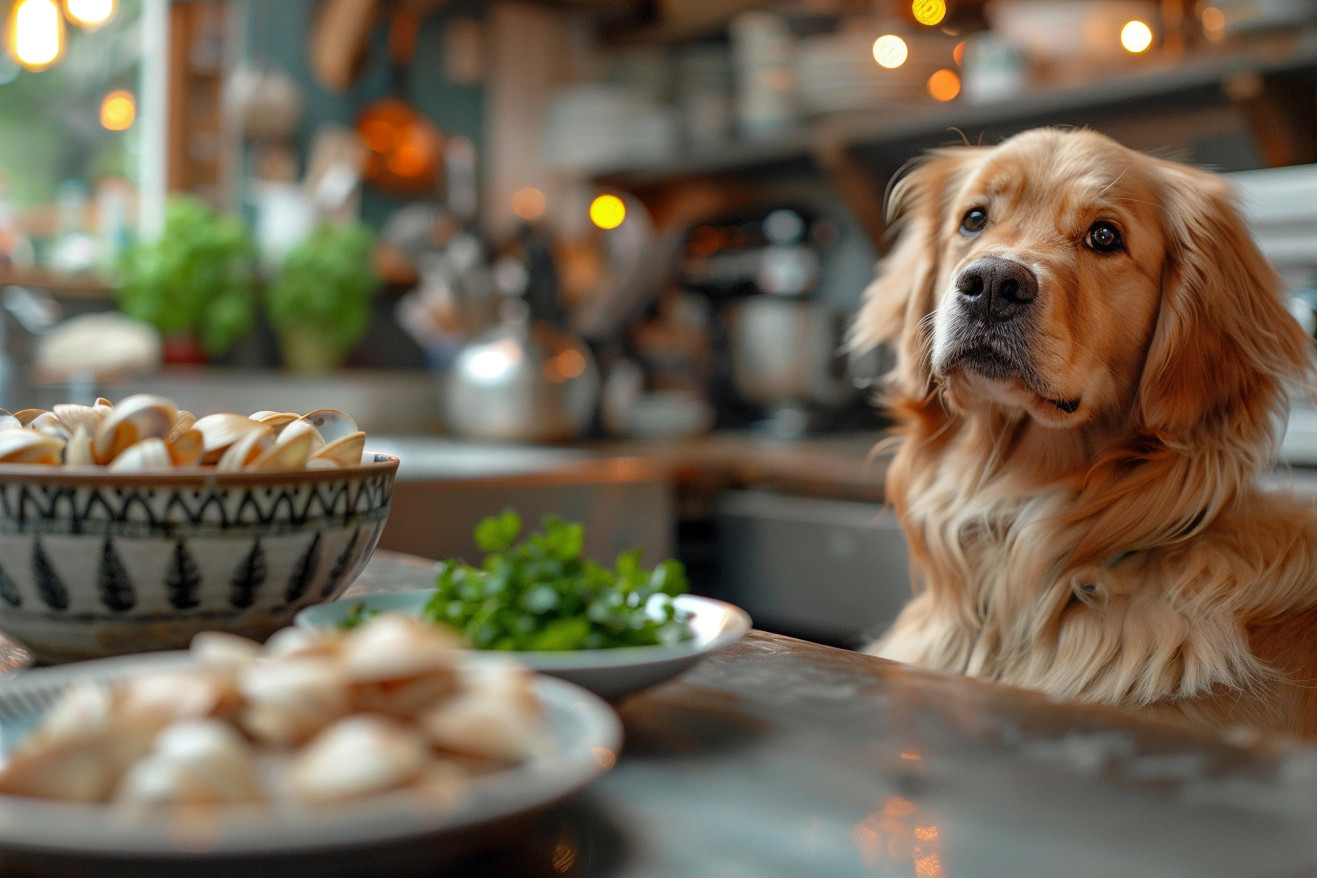Can Dogs Eat Clams? A Detailed Look at This Seafood Snack
25 March 2024 • Updated 25 March 2024

If you have a dog, you may have given them clams as a treat or found them while walking on the beach. So, can dogs eat clams? While dogs can eat clams in small amounts as an occasional treat, the shells must be removed because they can be a choking hazard. Clams are a good source of protein and other nutrients, such as vitamin B12, but they are also high in sodium, so they should not be a regular part of your dog's diet.
This article will take a deep dive into the topic of dogs and clams, using information from experts such as veterinarians and pet nutritionists. It will explore the potential benefits and drawbacks of giving clams to dogs, how many clams dogs can eat, how to prepare clams for dogs, and when you should skip giving clams to your dog altogether. This way, you can decide whether or not you want to give your dog this tasty seafood treat.
Can dogs eat clams?
Nutritional Benefits of Clams for Dogs
Clams may not be the first thing that comes to mind when you think of a special treat for your dog, but these unassuming shellfish are a nutritional powerhouse. Clams are a low-fat, high-protein food source that can be a valuable addition to your dog's diet in moderation, according to Raw Feeder Life.
One of the most important benefits of clams is their high mineral content. Clams are a great source of zinc, manganese, magnesium, iron, and selenium - all of which are important for immune function and thyroid health. In addition, clams are high in omega-3 fatty acids, which are important for skin and coat health and brain development.
Clams are also high in B vitamins, especially B12, which is important for energy metabolism and overall health, according to Petsolino. In addition, clams are a great source of the amino acid taurine, which is important for heart and eye health in dogs.
While clams shouldn't be the only thing your dog eats, their unique nutritional content can help ensure your dog gets a well-rounded diet. In addition, clams can be a valuable supplement to your dog's diet. As with any new food, you should introduce clams gradually and watch for any signs of an allergic reaction to make sure your dog can enjoy all the benefits this seafood has to offer.
Risks and Precautions of Feeding Clams to Dogs
While clams can be a nutritious addition to a dog's diet, there are several risks and precautions to keep in mind. According to New York Dog Nanny, raw clams can contain bacteria such as Salmonella and should always be cooked before being fed to a dog. In addition, clams that have been harvested from waters with high levels of pollution can contain toxins that cause paralytic shellfish poisoning, which can be fatal.
Dogs can also be allergic to clams, and the symptoms of an allergic reaction can include vomiting, diarrhea, and skin rashes. As mentioned by Hepper, while shellfish allergies are rare in dogs, they can be life-threatening if they occur. In addition, the shells of clams are sharp and can be a choking hazard, so they should be removed before the clams are served.
Finally, clams are high in sodium, and feeding a dog too many clams can lead to digestive issues. WagWalking also suggests that if a dog has a food allergy, it's important to be vigilant about what they eat, as repeated exposure to an allergen can weaken the immune system.
As long as clams are fed to dogs in moderation and with the appropriate precautions, they can be a safe and healthy treat. However, dog owners should be sure to keep a close eye on their dog's reaction and contact a vet if they notice any concerning symptoms.
How to Prepare and Serve Clams to Dogs
Because of the potential risks associated with clams, it’s important to take the proper precautions when preparing and serving them to dogs. According to World Dog Finder, clams should always be cooked to ensure that any bacteria or parasites are killed before they are given to dogs. In addition, the clam meat should be removed from the shells to avoid the risk of choking, especially since dogs may be tempted to swallow the shells whole.
Canned clams are not recommended because they are high in sodium and contain preservatives that can be toxic to dogs. However, Puppy Forum and Dog Forums explains that low-sodium clam juice or broth can be used in small amounts as a food topper to provide some of the nutritional benefits.
To avoid potential side effects, such as digestive issues or allergic reactions, Petsolino advises pet owners to introduce clams into their dog’s diet slowly and carefully. This way, you can start with small amounts and watch for any changes in your dog’s health to make sure that clams are safe and enjoyable for your pet.
How Much and How Often Should You Give Your Dog Clams?
According to World Dog Finder, clams should be given to dogs as an occasional treat and not as a regular part of their diet. For small dogs, 1-2 cooked clams per serving is a good amount. For larger dogs, 3-4 cooked clams per serving is fine, but the clams should make up no more than 10% of a dog's daily calories, according to Global Seafoods.
It's important to watch each dog's reaction to clams and adjust the portion size as needed. Some dogs may have trouble with clams even in small amounts, according to Daily Puppy. Owners should also watch for signs of an allergic reaction or other negative effects when they first give clams to their dog.
The next thing to consider when giving dogs clams is where the clams come from. It's important to make sure the clams are safe and free of contamination, including bacteria, toxins, and other substances that could harm dogs.
How to Find Safe, Non-Toxic Clams for Dogs
It is important to find safe, non-toxic clams if you want to feed them to your dog. As Dogs Naturally Magazine explains, bivalves like clams can accumulate toxins from toxic algae, which can cause paralytic shellfish poisoning (PSP). The amount of toxins in clams can vary based on the temperature of the water and other environmental factors.
To avoid this, make sure to buy clams from a trusted source that tests for contamination and is located in a cooler, cleaner environment, according to Can Dogs Eat It. Keep the Tail Wagging says that you can also look for frozen clams that have been cooked in their own juice or canned clams in low-sodium water, as these are less likely to be contaminated.
Pet parents should also make sure to stay up to date on any advisories or recalls in their area that could affect the safety of clams. By doing this, dog owners can make sure that they are getting the nutritional benefits of clams without the risk of contamination.
Conclusion: How to Add Clams to Your Dog's Diet
Clams can be a healthy occasional addition to your dog's diet if you prepare and serve them correctly. However, they should not be used as a substitute for a well-balanced, commercial dog food.
Make sure to watch portion sizes and how often you give your dog clams to avoid stomach upset and too much sodium. And always keep in mind the potential downsides of allergies, contamination, and choking hazards. That said, with the right care, clams can be a safe and fun addition to your dog's diet.


